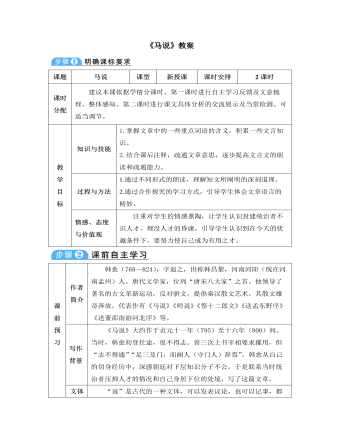-

中班数学:编号课件教案
准备 1.每组一套l~5的数字卡片。让幼儿自愿结合,每组5人,要高矮不同。 2.周围环境中有适于幼儿按大小排序的物体。每人一套l~5的数字卡片。 过程 活动(一)小朋友排队编号 1.排队编号。请幼儿从矮到高排队编号。教师交代:每组幼儿从矮到高排队后,报数编号,每人按编号领取相应的数字卡片。幼儿分组排队编号并互相交流,说一说:“自己这队小朋友是怎么排的队?自己排在第几?其他人排在第几?” 2.从高到矮排队编号,方法同上。 3.幼儿讨论。教师提问:“两次排队有什么不同?你都排在第几个?为什么?如:从矮到高排,明明排第1,从高到矮排,明明排第5。明明两次排队位置不同,这是为什么?”

中班数学:动物瓶课件教案
2.引导幼儿积极地与材料互动,培养良好的操作习惯。3.让幼儿体验数学活动的乐趣。活动准备:学具:空塑料瓶若干,黄豆若干,1-7不同数量的实物纸条,1-6的数字一组一份。教 具:1-6的数字卡、1-6的加点卡、动物图卡、大瓶子、背景图、头饰(火车头)、磁带。活动过程:1、以开火车游戏激发幼儿活动的兴趣。老师拿点子、数卡、动物图卡和孩子们进行问答游戏。师:嘿嘿,我的火车几点开?(师随机出示6以内的点卡、数卡)幼:嘿嘿,我的火车几点开。师:嘿嘿,来了几位小客人?(出示动物卡片)幼:嘿嘿,来了几位小客人。(反复进行几次)

中班数学:拼图形课件教案
活动准备各种图形片,记录纸、笔。活动过程1、找图形(把各种颜色、形状不同、大小不同的图形片放在一起)(1)一组拿红色正方形,第二组拿绿色长方形,第三组黄色三角形,第四组蓝色圆形,第五组红色梯形,第六组绿半圆形,看看哪组拿得又对又快?(2)请每组幼儿分别拿5个红圆,6个黄正方形,8个绿梯形、7个蓝三角、4个红半圆。每组一个幼儿在按要求拿的时候,其他幼儿在该幼儿拿好后要帮他数一数,看他数得对不对?(幼儿积极性很高,动作较快,也有一个组总是在最后,可组里的成员都在帮忙,帮着找图片,帮着数图片。)(这样的安排主要是考虑本班有这学期新来的幼儿,有的幼儿照着图形会找出同样的图形来,但如果老师叫他自己拿一个图形来,可能要找半天,特别是长方形和正方形会混洧,梯形也不能很快找出来。通过这两个操作活动,一是帮助幼儿复习图形,二是帮助幼儿复习正确地数实物。)2、拼一拼,说一说,记一记。教师为幼儿提供图形片,老师说一个东西,让幼儿来拼,拼好后说一说你是怎么拼的?每种图形用了几个,记录下来。(1)请幼儿拼一个小人。我在巡视的时候,有个叫王志鹏的孩子对我说:“老师我拼了一个女的。”我当时只是看了一下,随口说了一声“不错”,但心想:为什么是女的?随后又去看其他幼儿拼的情况,这时由于受王志鹏小朋友的启发,我注意看其他孩子的,发现了孩子们拼的小人各有不同,全班只有几个孩子和别人拼的是一样的,其他都不相同。拼好后,我就先请王志鹏说一说,他是怎么拼的?王志鹏说:“我用圆形拼了这个女孩子的头,用正方形拼了她的身体,用长方形拼了她的手,用梯形拼了她的裙子……”张洁说:“我也拼了一个女孩子,是圆形拼了她的头,三角形拼了她的手和身体,梯形拼了她的裙子,腿被裙子挡住了。”也有好多是拼的女孩子,但他们不是体现在裙子上,而是体现在头上,如赵磊用两个半圆拼女孩子的辫子,冠晔是用两个圆拼了辫子……(就拼一个小人,幼儿就用不同的图形拼出了不同的女孩子而且每个孩子都能把自己拼的过程,用自己的语言表述出来。如果孩子不说给你听,你可能粗看一下还不能明白,但经孩子这么一讲解,当时真是恍然大悟,正如瑞吉欧所说:孩子有一百种语言,一百双手,一百个念头,一百种思考、游戏、说话的方式。)

中班数学:比多少课件教案
二、重点和难点 让幼儿利用一一对应的方法发现两个物体集合之间的数量关系。 说明 一一对应是比较物休的集合是否相等的最简便、最直接的方式。通过一一对应,不仅可以比较出两个集合之间量的大小,更重要的是还可以发现相等关系,这是幼儿数概念产生的一个关键性步骤。因此,让幼儿在对材料的操作摆弄中自己“发明”一一对应的方法,并通过一一对应的方法去发现两个物体集合之间多、少和等量关系是至关重要的。 三、材料和环境创设 1.材料:诱发对应性材料--碗和调羹、杯子和杯盖、娃娃和帽子、小兔和青菜、……。自发对应性材料--雪花片和木珠、红积木和绿积木、苹果和香蕉、汽车和飞机等等。以上材料可用实物,也可用图片。 2.环境创设:将以上材料按难易程度编号放暨在数学活动区内供幼儿操作摆弄。

大班数学:剪“春”课件教案
2、激发幼儿大胆的想象,自由剪出不同变化的“春”字。 3、通过幼儿自主的操作,初步理解“减法”的含义。活动重点:能大胆想象剪出不同变化的“春”字活动难点:初步理解减法的含义材料与环境创设: 1、 幼儿已经学会剪“春”字2、 工具:剪刀、固体胶、手工纸(每人数量不同)方形铅画纸3、 5以内的减法题(人手一份)

部编版语文八年级下册《马说》教案
课时分配 建议本课依据学情分课时。第一课时进行自主学习反馈及文意梳理、整体感知。第二课时进行课文具体分析的交流展示及当堂检测。可适当调节。教学目标 知识与技能 1.掌握文章中的一些重点词语的含义,积累一些文言知识。2.结合课后注释,疏通文章意思,逐步提高文言文的朗读和疏通能力。过程与方法 1.通过不同形式的朗读,理解短文所阐明的深刻道理。2.通过合作探究的学习方式,引导学生体会文章语言的精妙。情感、态度与价值观 注重对学生的情感熏陶,让学生认识封建统治者不识人才、埋没人才的昏庸,引导学生认识到在今天的优越条件下,要努力使自己成为有用之才。

部编版语文八年级下册《庆祝奥林匹克运动复兴25周年》说课稿
一.说教材 1.教材所处的地位《庆祝奥林匹克运动复兴25周年》是人教版部编初中语文教材八年级下册第四单元“思想光芒”中的一篇经典演讲词。它是同学们接触过《 最后一次讲演》《应有格物致知精神》《我一生中的重要抉择》,初步了解、掌握关于演讲的一些技巧之后,再次让学生倾听那些穿越时空的声音,感受演讲精品的魅力,并总结、借鉴典范演讲的经验,在历练中提高演说才能。因为在现代社会中,良好的口语交际能力是公民的重要素养之一,它不但显示着一个人的语言水平,更体现着一个人的自信、智慧、教养与风度。2.教材分析 《庆祝奥林匹克运动复兴25周年》是顾拜旦于1919年4月在瑞士洛桑庆祝奥林匹克运动恢复25周年纪念会上的演说,是关于奥林匹克运动的重要文献。顾拜旦用诗歌般的语言阐述了奥林匹克精神的内涵与价值;以饱含喜悦的神情引领听众去联想奥林匹克精神无限美好的前景。这篇演说词和他的诗歌《体育颂》一起成为世界文化史和体育史上不朽的篇章。

部编版语文八年级下册《应有格物致知精神》说课稿
指导思想:《应有格物致知精神》是义务教育课程标准实验教科书九年级上册第四单元第二课,本单元编排的课文全是议论文,除了让学生掌握议论文的一些常识,培养阅读议论文的兴趣外,更要明白教材目标。“格物致知”是一篇漫谈式议论文,除让学生掌握基本知识和技能外,更重要的是让学生热爱科学、勤于探索、勇于创新,培养学生有服务人类,回报于社会的高尚品格,树立正确的人生观念。本文是丁肇中在1991年10月,在北京人民大会堂举行的“情系中华”大会上演讲的一篇演说词的一部分,是一篇漫谈式的议论文。作者针对中国学生的实际情况,结合传统的中国教育状况,分析了实验精神在科学上的重要性,并联系现实和自己的学习经验,提出论点:我们应该有真正的格物致知精神,即需要培养实验的精神,不管研究自然科学、人文科学还是在个人行动上,我们都要保留一个怀疑求真的态度,要靠实践来发现事物的真相。本文主要运用摆事实讲道理的论证方法,说理透彻,语言准确。

部编版语文八年级下册《在长江源头各拉丹冬》说课稿
说教材本文是部编版八年级语文下册第五单元的第二篇课文,同时也是一篇游记。作者生动的写出了格拉丹东雪山的壮美,表现了长江源头的神异不凡。说学情学生虽然听说过雪山,但亲眼见过雪山的同学比较少。本课从纪录片《再说长江》入手,再现长江的源头,揭开格拉丹东雪山的神秘面纱,激发了学生求知和探索的学习欲望。教学目标1.准确认读并理解重点字词。2.了解游记的特点,把握作者的游踪、写景的角度、写景的方法,体会格拉丹冬冰塔林的特点3.揣摩品味语言,欣赏、积累精彩语句。教学建议【教学方法】1.朗读法。2.品味点拨法。3.合作探究法。【课时安排】2课时一、教学导入长江,她以自己的源远流长、磅礴大气和她的风光万千,为我们构筑了永恒的大江之美,启发着一代又一代华夏儿女的激情与灵感,赢得了世人发自肺腑的赞美和感叹。今天我们来学习《在长江源头各拉丹冬》这篇文章,欣赏长江的源头各拉丹冬这片雪域高原的壮美景色。

人教版新目标初中英语七年级下册What does he look like教案3篇
所需要用到的句子:Who is that?That is Jack. I like him.Why do you like him?I like him because he is interesting.Task 4: 设计理想中的人类Step one: 设计理想中的人类的外貌。把全班同学分成若干小组,学生可以边说边在纸上画出他们的模样。Step two: 设计理想中人类的性格。学生们可以把那些能描述性格的单词写在图画的旁边。Step three: 每组选出一名同学,其他同组同学提问,他作简单回答,并说明原因。所需用到的句子:What does he or she look like?He or she ...What is he or she like?He or she is ...Why?Because ...Task 5: 挑战性活动调查性格是天生的还是后天形成的,让每个同学回家去调查一下自己成长过程中性格是否有变化,具体是怎样的,为什么会这样? Teaching Aims:1. Enable students to have a general understanding of how to talk about people's physical appearance.2. Enable students to tackle some essential vocabularies and patterns about describing people. Provide them with necessary skills and methods.3. Create various chances for students to describe the persons they're familiar with, such as classmates, family members, teachers, idols, etc.

人教版新目标初中英语七年级下册Where is the post office教案2篇
Period 2 (3a----Section B 2c)Preview(Pre-task): Key points: What laAdd another information about their pen pals----their language on the cardnguage does she/he speak?She/He speaks....Does she/he have any brothers and sisters? Does she/he speak English?Preview(Pre-task): Add another information about their pen pals----their language on the cardKey points: What language does she/he speak?She/He speaks....Does she/he have any brothers and sisters? Does she/he speak English?Step 1 Revision1.Revisionand dictation of the new words 2.Revise the drills they learned yesterday.(by pairwork and grammar exercise)Step 2 Leading-inT has a conversation with one student. The conversation is following:---Do you have a pen pal?---Yes, I do.---What's your pen pal's name? ---His/Her name is....---Where is your pen pal from? ---He/She is from...---Where does he/she live? ---He/She lives in....---What language does he/she speak?He/She speaks...Write the new words on the Bb. They are following: EnglishChineseJapaneseFrenchStep 3 LearnLearn the new words with the whole class.Finish 3a with the students3b Pairwork T still does an example with one student Then the Ss practise in pairs. The example is following:--Curry Muray is my pen pal. He is from the United States.---What language does he speak?

人教版新目标初中英语七年级下册Why do you like koalas教案2篇
单元整体说明(一)单元教材分析本单元的核心话题是描述动物和表达个人喜好,以及句式why do you like…? Because…。这也是本单元的教学重点。通过本单元的学习,学生应能较流利地运用所学词汇和句型描述动物,表达个人喜好。(二)单元知识结构1.词汇动物名称 tiger, elephant, koala, dolphin, etc.词汇描述性形容词: smart, cute, ugly, clever, shy, etc.国家名: Australia, South Africa2.句型Why do you like koala hears? Because they are cute.Where are pandas from? They're from China.What animals do you like? I like dolphins.(三)单元整体目标1.Master the vocabulary2.Master and use: Why do you like koalas? Because they am cute.Where are pandas from? They're from China.What animals do you like? I like dolphins.(四)单元教学重难点一览(五)单元学情分析学生此前已经学过由why, where, what 引导的特殊疑问句句型,具有了学习本单元知识的认知前提。形形色色的动物能激发学生的好奇心,产生了解它们的欲望,这有利于本单元知识的教学和学生学习兴趣的培养。

人教版新目标初中英语八年级下册If you go to the party, you’ll have a great time教案2篇
区分宾语从句、定于从句和状语从句宾语从句和状语从句,都叫做主从复合句。宾语从句主要是中考必考的,是初中阶段必掌握的从句,宾语从句主要是掌握三要素,所谓宾语从句,就是宾语在主从复合句当中充当宾语的一个句子,叫做宾语从句。主句的谓语动词是及物动词,后面如果是词或者是短语的话,是简单句,如果是句子的话,肯定是宾语从句。I know that he good at English.就是宾语从句,三要素,一要素是要注意连词,连词一共学了三类连词,一类连词是that口语当中可以省略,就像刚才说的那一句,I hear he is good at English.还有疑问代词、疑问副词,how where when,疑问代词、疑问副词。还有一类连词weather是否的意思,不是状语从句当中的如果,这一定要和如果区分开,这是是否。I don't know if he interested at English。宾语从句要注意if是连词。第二要素是语序,要用陈述举语序。比如说你家有几口人,我们都说How many people are there in you family?但是这是简单句,一旦说成宾语从句,你可以告诉我你家有几口人吗?Could you tell me how many people there are in you family ?

人教版新目标初中英语七年级下册How was your weekend教案2篇
Teaching Goal:1. General aims:Talk about recent past events2. Particular aims:A. Language Focus.Talk about recent past events and think of the past events.B. Language goalsHow was….?It was …What did …do over the weekend?C. Language structures:(1). How was your weekend? I was great. Pay attention to no form.(2). What did you do over the weekend? I played soccer. We went to the beach.D. Useful words and phrases:Words: was, did, went, beach, over, project, test, wasn’t, false, number, geography, spend, week, most, mixture, their, had, little, cook, read, saw, change, everyone, sit, sat, no, anythingPhrases: did one’s homework, played soccer, cleaned my room, went to the beach, played tennis, went to the movies, on Saturday morning, over the weekend, cook … for, what about, do some reading, have a party, talk show, go shoppingE. Grammar language:Present simple past tenseRegular and irregular verbsF. Learning strategies:Tour and holidaysG. Interdiscipinary:H. Emotion and manner:Teaching time: 5 periodsTeaching procedures:Period One教学步骤、时间 教师活动 学生活动 媒体应用Step 1Free talk 3’ Ask some questions like:Who’s on duty today?What’s the weather like? Answer and talk about something.让同学们回答下列问题1. Do you like weekend? (Let some students answer)It takes them three minutes to talk about the question.2. Why do you like weekend? (let the students answer) Most of the students like the weekend此时教师用汉语问:“在周末期间问你干了什么?这句话用英语这么回答?Let the students guess.At last the teacher give them right answer3. What did you do over the weekend?(板书、学习)

人教版新目标初中英语七年级下册Don’t eat in class教案2篇
Don’t fight. =You can’t fight. (板书,教读)教师把这些句子板书在黑板上,并请学生大声整齐地读祈使句和“can’t”句型,并让学生注意两种句型表达形式的不同和转换,“Don’t …=You can’t…”;并对学生说:These are our school rules. (板书,教读) You can’t break the school rules. Don’t break the school rules.(板书,教读)步骤3 :Practicea. T: Now, each of the students is breaking one of these rules.Please finish 1a.学生看图,完成1a的内容,检查答案并大声朗读校规。b. 听录音,完成1b,选出四位学生都违反了哪条校规;听之前,学生要读会英文名。c. 请两位学生朗读1c部分的句型;要求学生两人一组对话表演,SA扮演外校转来新生,SB告知本校校规。(学生可经过讨论,多说出他们想到的校规,不必只限于书上;教师应给予帮助)2) 第二课时(2a~4)步骤1 :warming up of revisionT: What are the rules at your school?学生使用“can”或祈使句表达各条校规;其中老师可引出“eat in the cafeteria outside”的表达。步骤2 :Practicea.T: Christina is an exchange student. She doesn’t know the rules. Let’s listen, what activities they’re talking about?学生听第一遍时,完成2a;第二遍时,完成2b;b. 请学生领读2c部分,看着2a完成的表格,理解2c活动的要求;分成小组针对2a进行问答;

人教版新目标初中英语七年级下册I want to be an actor教案2篇
三、教学建议第一课时:1. Lead in (Vocabulary)A) Before class, teacher should collect some pictures of working places. For example: Bank, TV Station, Restaurant, Police Station, Hospital ...B) In class, show students the pictures (PowerPoint, OHP). Ask students to tell the name of the working places and the name of the jobs.Shop assistant, doctor, actor, reporter, police office, waiter, bank clerk, studentC) Do exercise 1a and 3a.2. Bingo GameAsk groups of students to make up pairs of cards with a job on one and the related workplace on the other. For example, waiter / restaurant, teacher / school, doctor / hospital. Encourage students to use both the job / workplace combinations in the book and the ones that students came up during class discussions. Be sure they have twice as many sets of cards as there are students in the group. They can make two sets of cards for a single job / workplace, if necessary. Then have each group mix up its set of cards and hand their cards out in random order. Each time a student gets a pair of cards that match, he or she can lay these cards down. The goal is to have no cards in your hand at the end.3. Task OneA) Ask students to work in pairs and ask the partner what does he / she want to be in the future.e. g. :What do you / does he / does she want to be?I want to be a.Why?Because it's (adj).B) Vocabulary: Section B, 1a4. Homework 1.2.

人教版新目标初中英语七年级下册It’s raining教案2篇
1 Each group choose one place to describe and what you are doing in it Choose one place, and describe what they are doing 2 Move around the room and give suggestions Talk about it and write it down 3 Ask one to show their works and act it Choose one of each group to make a report 4 Evaluate the best group and the best reporter Choose the best one Homework Ask your friends their ideal place and write about it教学反思:新课程标准中强调学生在课堂中的主体地位,在综合课中他们的主体地位就更加突出。在各个活动中给不同程度的学生不同层次的任务,让各层面的学生都有表现发挥的机会,从而产生对英语的兴趣。使用照片图片多媒体来辅助教学,效果更好。同时让了解其他国家风景,风俗的同学介绍ideal place,增加学生的背景知知识,实现跨学科交流的目的。教案点评:采用任务型教学模式,在各个活动中给不同程度的学生不同层次的任务,让各层面的学生都有表现发挥的机会,从而产生对英语的兴趣。使用照片图片多媒体来辅助教学,效果更好。让了解其他国家风景,风俗的同学介绍ideal place,增加学生的背景知识,实现跨学科交流的目的。

人教版新目标初中英语八年级下册What should I do教案2篇
说明:在帮Li Lei提建议的同时,教育学生如何学好英语。第三课时教学目标1. 语言目标:a) 词汇: Original, in style, haircut, the same as.b) 语言结构:My friend wears the same clothes and has the same haircut as I do.2. 能力目标:大多数学生能够谈论自己喜欢哪种服装,提高查找信息的能力。3. 情感目标:学会如何与朋友相处,要有自己对时尚的看法。教学重点掌握一些重要词汇。教学难点学会谈论问题,并能提出书面建议。◆教学突破首先针对Erin的问题,提出个人的建议,模仿2c部分的对话展开双人交际Pair-work;听老师诵读3a部分的信件,并找出LEFT OUT的问题所在;学生完成3b部分的内容,给Left Out提出书面的建议;学以口头形式提出自己目前存在的某个问题,讲给大家听,让同学们给自己提出一个建议,并作笔录;学生两、三个人分成一组,随意性地进行口语交际,谈论P14的第4部分的某个问题,相互交换意见。

人教版新目标初中英语八年级下册It’s a nice day, isn’t it教案2篇
"Hello! Welcome to English class! Introduce yourself. Meet your new classmates." That's what the teacher says. What do you say? "Oh no!" It can be difficult talking to new people. But it can be fun, and you can make friends. How do you do it? Make small talk. Small talk is polite conversation. "Wang Nan is a great pingpang player, isn't she?" "I'd love to meet her, wouldn't you?" "It's been raining a lot, hasn't it?" Tag questions are a form of polite speech. To make small talk successfully, you should know how to make them. You should also know what topics to talk about. Try to learn this unit carefully. The next time you're in English class, you'll find out. Making small talk's easy, isn't it? (“你好!欢迎你!请做一下自我介绍。认识一下你的新同学。”通常在课上老师会这样说。你会说什么呢?“噢,不!”与陌生人谈话太困难了。但是这也很有意思,并且你还能交到朋友。你该怎么做呢?闲聊。闲聊指得是礼貌的对话。“王楠是一个很棒的乒乓球运动员,不是吗?”“我希望自己能认识她,你呢?“今年的雨水很多,不是吗?”反意疑问句是一种礼貌用语。为了使得谈话成功,你应该知道怎样去进行闲聊。你还应该知道与不同的人该谈论什么样的话题。认真的学习这个单元吧,下次在英语课上,你会发现与大家展开谈话是一件很容易的事情,不信我们来试试。)

人教版新目标初中英语八年级下册How long have you been collecting shells教案2篇
Step Ⅱ Show the new words on the screen and teach the new words. Read the new words to students and ask them to repeat.Step Ⅲ 3aThis activity introduces new vocabulary and provides reading practice using the target language.In this activity first look at the four pictures.T: What can you see in the pictures?Ss: Four snow globes.T: Right. There are four snow globes in the pictures. And what are they?Ss: They are a monster, two polar bears, two penguins and a birthday cake.Write these words on the blackboard: snow globe; monster; polar bear; penguin and birthday cake. Read them to the class and ask students to repeat each one. Make sure students understand each word.Use a computer to show the E-mail message on the screen and read the message to students.Get students to read the e-mail on their own, and then draw lines connecting each snow globe and its description.Correct the answers.AnswersA line should connect each snow globe picture with the words that describe it in the letter.Step Ⅳ 3bThis activity provides writing practice using the target language.First review Activity 2a on Page 47.Then ask students to complete the message according to Activity 2a.Some partial sentences are given to students. Write about one person's collection.When students work, walk around the room checking the progress and offering help as needed.When they finish, ask some students to read their messages to the class.

